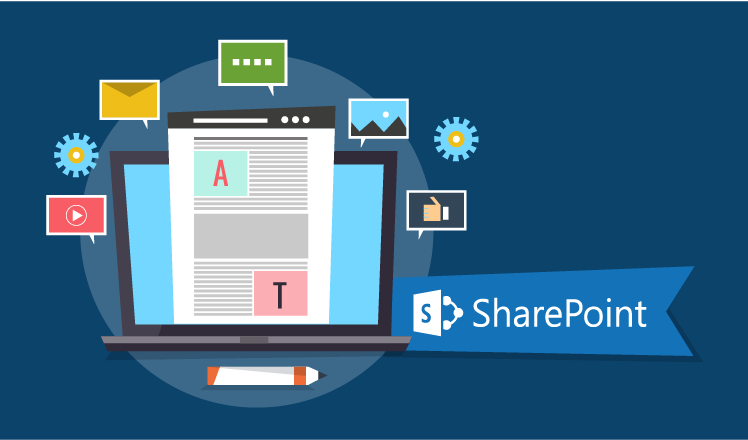Unleashing the hidden power of your SharePoint blog
If you ask SharePoint owners and users about their favorite features of the SharePoint intranet, you can be sure that a SharePoint team site will be among the most popular answers. Indeed, almost 60% of companies confirm that a team site is the most frequently used collaboration feature (The Impact of SharePoint – 2016, AIIM Industry Watch). At the same time, team sites’ glory outshines other SharePoint features that quite often stay untouched in the SharePoint box. SharePoint blog is one of these undervalued components.
Traditionally, a default SharePoint blog serves the sole purpose – it hosts a corporate blog. Delegated to the HR department or a selected group of employees, such a blog contains either corporate news or specific content that covers interests of a limited audience. In SharePoint consulting terms, it means that companies underuse available SharePoint capabilities, which prevents them from getting the most out of their subscriptions.
So let’s take a look at alternative usage scenarios for your SharePoint blog and determine some domains where you can use the blog’s capabilities to diversify corporate collaboration experience.

Perks of a SharePoint blog you can leverage
Available among other out-of-the-box features, SharePoint blog brings at least 4 advantages that distinguish it from a standard team site.
- Real-time content editing. When in a SharePoint blog, users can edit and publish text, graphics and video content via an embedded content editor. This enables users to create forum-like content-rich publications and not just share small pieces of content, documents and files, as it happens on a team site newsfeed.
- Automatic classified content archiving. When you publish content on a SharePoint blog, it is automatically classified by date. This way, you will always be able to find a post created in a particular month or year, which is very useful if you need a well-arranged archive within your SharePoint solution.
- Content categorization. Another convenient way to arrange publications in a SharePoint blog is to sort it out by categories. This is a feasible way for employees to organize thematic content compilations and follow only the topics that correlate with their preferences. This can be a great addition to a document-focused and folder-based content representation on a SharePoint team site.
- Rating. One of the most appealing default blog features is rating. On the one hand, users can evaluate the quality of content they read. On the other hand, they can grant their peers with statuses and badges for their contributions to the blog. None of these capabilities is available on an out-of-the-box team site.
5 nontrivial usage scenarios for your SharePoint blog
If you are looking for some easy ways of enriching collaboration on your corporate intranet, a SharePoint blog is definitely a component to include in your list. As an element of SharePoint team sites or as a separate content area, it can accompany employees in a variety of business activities.
1. Project Management
As a part of a project site, a SharePoint blog can help project teams to document project challenges, analyze complex and extraordinary tasks and cases, describe unique solutions and provide comprehensive guidance on a particular project. The blog can then be shared with other teams so that they could apply the described methods in their own practice.
2. Research activities
Whether your company has an R&D department or just a small marketing analysis team, a SharePoint blog can foster their daily work. Let your employees involved in research activities to post ready-made or preliminary results, explore industry trends, share their findings, and discuss them with peers. By sharing a blog, you can also quickly spread research results among all the interested parties.
3. Departmental activities
A SharePoint blog can also become a part of your departmental site. This way, department members will be able to sum up department activities, as well as share the latest news and trends in the domain, be it accounting, procurement or law. Contributing to a departmental blog can become a regular activity for all members of a department. The most valuable contributions can become the ground for corporate bonuses and awards.
4. Knowledge management
Another domain to support through a SharePoint blog is enterprise knowledge management (KM). As an integral component of a KM solution, a blog will help employees to externalize their unique expertise, thus creating a diversified knowledge base. Enabled throughout the company, multiple blogs will allow specialists to find the needed answers and recommendations of their peers, even those who are absent or have already left the company.
5. External collaboration
A SharePoint-based blog can also be a dedicated area for external collaboration. An externally shared blog can become a hub for employees to collaborate on various content with customers and partners, carry out joint research, launch co-innovation projects, manage shared content repositories and more. This can be a suitable solution for a content-centric work of several teams belonging to different business entities.
A slight customization can make a great difference
Of course, you can use the out-of-the-box SharePoint blog as it is. However, if you decide to make it a notable and attractive part of your SharePoint solution, consider customizing it.
If you decide to use it for project management purposes or as a departmental content repository, you can design the blog in line with the project or team site so that they have a single look and feel. If you create a knowledge repository with multiple categories, you can develop custom themes for each category to be easily recognizable. You can also work on rating systems and add custom ratings and badges for particular teams or departments. Any of these customizations are feasible for SharePoint consultants and won’t cost you a fortune.


